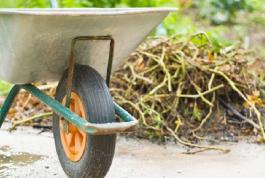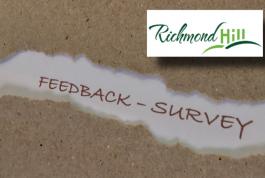Article and photo by Doreen Coyne, a member of the Richmond Hill Garden & Horticultural Society
Your hard work of planting, weeding, watering has yielded lots of vegetables. Perhaps more than you can eat or give away! So, freeze the rest and have healthy inexpensive veggies year-round.
In the old days, my mom with my sister’s and my help, canned tons of stuff from the garden and as we got older we got a freezer for our cold room in the basement. Then we started to freeze produce. Of course, canning, making jams and jellies and pickling were some of the other things we were called upon to do each summer and fall.
In a previous article, you’ve read about my freezing techniques with zucchini. For most of the vegetables mentioned in this article, you will need to parboil the raw vegetables to help you freeze them.
What’s parboiling? Boil water, add the veggies and let them boil for up to 5 minutes. Then remove them from the boiling water and place them in a bowl of ice water to stop the cooking process. Dry them off and freeze them. If you bag the vegetables for freezing so you eat all of the vegetables you want each meal, they simply put them in freezer bags of the size that will hold one meal’s worth and place them in the freezer. For many vegetables, I like to freeze the “pieces” separately (aka the piece method). You do that by placing the veggies on a parchment-lined cookie sheet(s) – don’t let the pieces touch- and putting those in the freezer. The next morning, take them out and quickly put them into 1 large freezer bag because now they’ll stay separately just as if you bought them frozen from the grocery store. So, what other veggies can you freeze?
Green Beans
I like to pick my yellow and green beans then freeze them. You need to wash them, take off the ends and the choice is yours as to whether you cut them in short lengths or cook them full length. I think they taste better for freezing if left full length. Now parboil them and freeze. You could also do this with other bean-like vegetables such as snow peas. For snow peas, be sure to remove the coarse thread that runs down one side of the pod.
Peas
For peas, just shuck the peas from the shells, parboil the actual peas for a minute and freeze.
Acorn Squash
I tend to bake this vegetable by cutting it in half with the cut side down in the oven. When done – about 45 minutes for acorn squash – you take them out, let them cool and then scoop out the squash and put it into an appropriate-sized bag for freezing. One of my friends simply freezes each halved squashed using the overnight freezing method for “pieces”
Butternut Squash
I tend to peel those first and then cut them into large cubes. To do that you can peel it with a potato peeler. Then cut each in half, and then start making cubes. No need to parboil these. Just place the cubes on parchment-lined cookie sheets and bake them in the oven for some 30 minutes. freeze them overnight. Then all of them can go in one big bag the next morning.
Carrots
Later in the fall, I will do a similar thing with my carrots, slicing and freezing some as circles (1/4” thick), and others as medium-sized cubes. How does one make these cubes? Make large carrot sticks then cut the carrot lengthways at least twice so it is quartered. Then hold the quarters together to chop them into pieces, aka cubes. For carrots, you will need to parboil for 3 (for pieces) to 5 (for circles) minutes. Some of these will be added to soup when it is made. And some will become carrots as a side dish for dinner. Only need a few at a time? Use the piece method to freeze them!
Corn
Cook corn on the cob as you normally would. Let it cool. Then slice off the kernels. Bag the kernels in smaller “per meal” bags and freeze them.
Tomatoes
If I have too many tomatoes, I do parboil them; but, just for 1 to 2 minutes. You aren’t cooking them; you just want the skin to loosen. You puncture the skin with a knife and the skin will very easily peel off. Add some little bit of salt and package enough in each small bag for freezing for a family meal. Cherry tomatoes can simply be washed, dried, and frozen in bags using the piece method.
I don’t freeze onions, peppers, or celery. But you can grill peppers, take off the skin and freeze them with added oil and spices. Bananas - as they begin to get too mature, mash them up, add a squirt of lemon juice and freeze them to make banana loaves in the winter! Fruits like raspberries, strawberries, and blueberries – wash them a couple of times, gently pat them dry with a paper towel, then freeze them using the piece method. Other fruits, like apples, plums, apricots, bananas, etc. – consider drying them for snacks. Kale – most folks I talk with say they tend to cook them up as a part of a Potato and Leek soup – check that out with other ideas at this link.
There are lots of ways to preserve your summer yield of vegetables and fruit for healthier, low-cost food that is available directly from your freezer!









